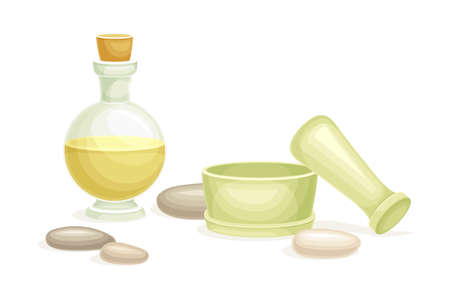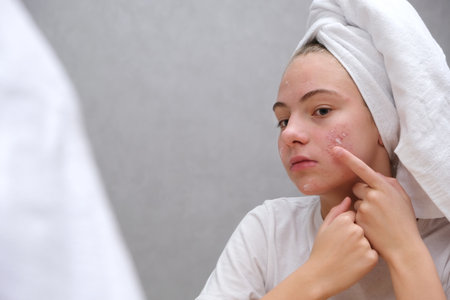1. Understanding Retinol and Retinoids
When it comes to skincare, especially anti-aging and acne treatments, you’ve probably heard the terms “retinol” and “retinoids” tossed around. But what exactly are they, and how do they differ? Lets break it down in a simple way.
What Are Retinol and Retinoids?
Both retinol and retinoids are forms of vitamin A — a powerful ingredient known for its ability to speed up cell turnover, boost collagen production, and clear out clogged pores. They help improve skin texture, reduce fine lines, fade dark spots, and treat acne. The key difference lies in their strength and how quickly they work.
Vitamin A Derivatives Explained
Retinoids is the umbrella term for all vitamin A derivatives used in skincare. Retinol is just one type of retinoid that’s commonly found in over-the-counter (OTC) products.
| Type | Strength | Availability | Common Use |
|---|---|---|---|
| Retinol | Mild | Over-the-Counter (OTC) | Anti-aging, mild acne |
| Retinaldehyde | Moderate | OTC | Anti-aging, moderate acne |
| Tretinoin (Retinoic Acid) | Strong | Prescription Only | Severe acne, deeper wrinkles |
| Adapalene | Mild to Moderate | OTC & Prescription | Acne treatment |
Why Are They So Popular?
The reason retinol and retinoids are staples in so many skincare routines is because they’re backed by decades of research. Dermatologists often recommend them for their proven ability to transform the skin — whether you’re fighting breakouts or looking to soften signs of aging.
A Quick Recap:
- Retinol: Great for beginners; slower-acting but gentler on the skin.
- Retinoids: Stronger options that deliver faster results but may require a prescription and come with more side effects like dryness or irritation.
This foundational knowledge will help you better understand which type might be right for your skincare goals as we explore deeper into their differences in the next sections.
2. Key Differences Between Retinol and Retinoids
If you’ve ever stood in the skincare aisle wondering whether to grab a retinol serum or ask your dermatologist about retinoids, youre not alone. While both ingredients are related and fall under the umbrella of vitamin A derivatives, there are some important differences to know before choosing one. Let’s break it down into four key areas: strength, formulation, availability, and how the skin processes each.
Strength
The biggest difference between retinol and retinoids is their strength. Retinoids are generally much more potent than over-the-counter (OTC) retinol products. That’s because retinoids like tretinoin (also known as Retin-A) are already in an active form that your skin can use immediately. On the other hand, retinol needs to go through several conversion steps before becoming active in the skin — making it gentler but also slower to show results.
Quick Comparison:
| Product Type | Strength Level | Conversion Needed |
|---|---|---|
| Retinoids (e.g., Tretinoin) | High | No conversion needed |
| Retinol | Moderate to Low | Requires multiple conversions |
Formulation
Retinol serums are often formulated with added hydrating ingredients like hyaluronic acid, glycerin, or ceramides to help reduce irritation and dryness. This makes them more suitable for beginners or people with sensitive skin. Prescription retinoids tend to be more straightforward and may require you to add moisturizing products separately to avoid dryness or flaking.
Availability (OTC vs. Prescription)
This is a major practical difference. Retinol is available over the counter at drugstores, beauty retailers, and online without a prescription. You can find it in various strengths and formulations. Retinoids like tretinoin, adapalene (except for Differin, which is OTC), and tazarotene typically require a prescription from a healthcare provider in the U.S., although some lower-strength options are now available OTC.
Availability Overview:
| Ingredient | Prescription Needed? | Where to Buy |
|---|---|---|
| Retinol | No | Drugstores, Sephora, Ulta, Online Retailers |
| Tretinoin (Retinoid) | Yes | Through Dermatologist or Online Telehealth Services |
| Differin (Adapalene) | No (0.1%) / Yes (0.3%) | Drugstores (0.1%) / Prescription (0.3%) |
How Each Is Processed by the Skin
This is where science gets a little technical — but we’ll keep it simple. Retinoids like tretinoin are already in their active form, meaning your skin doesn’t have to do any work to convert them into something useful. Retinol, however, has to be converted into retinaldehyde first and then into retinoic acid (the active form). Because of this conversion process, retinol tends to act more slowly and gently on the skin compared to prescription-strength retinoids.
Simplified Conversion Pathway:
Retinol → Retinaldehyde → Retinoic Acid (Active Form)
This difference in processing explains why many people start with retinol before moving on to stronger retinoids — it’s less likely to cause redness, peeling, or irritation when used correctly.

3. Benefits and Potential Side Effects
Both retinol serums and retinoids are powerful skincare ingredients known for their anti-aging and acne-fighting benefits. While they work in similar ways, their strength and how your skin reacts can vary.
Skin Benefits of Retinol Serums and Retinoids
These vitamin A derivatives help speed up cell turnover, which can lead to smoother, brighter, and more even-toned skin over time. Here are some of the most common benefits:
| Benefit | Retinol Serums | Retinoids (Prescription) |
|---|---|---|
| Boosts collagen production | Yes, gradually with consistent use | Yes, often faster due to higher potency |
| Smooths fine lines and wrinkles | Visible results in 8–12 weeks | Can show improvement in 6–8 weeks |
| Evens skin tone and texture | Mild improvement over time | More noticeable changes with regular use |
| Treats mild to moderate acne | Helps unclog pores and reduce breakouts | Highly effective for inflammatory acne |
Potential Side Effects to Watch Out For
No matter which form you choose, both retinol and stronger retinoids can come with some temporary side effects—especially during the first few weeks of use as your skin adjusts.
- Dryness: Skin may feel tight or flaky, especially when starting out.
- Irritation: Redness or stinging can occur, particularly with prescription-strength retinoids.
- Purging: This is when breakouts seem to get worse before they get better as clogged pores come to the surface.
If you have sensitive skin or are new to retinoids, starting with an over-the-counter retinol serum may be a gentler introduction. Always follow up with a good moisturizer and use sunscreen daily, as these ingredients can make your skin more sun-sensitive.
4. Who Should Use Retinol vs. Retinoids?
Choosing between retinol and retinoids depends on your skin type, concerns, and how familiar your skin is with active ingredients. While both are vitamin A derivatives that can improve skin texture, reduce fine lines, and fight acne, they differ in strength and how quickly they work.
Skin Type Matters
If you have sensitive or dry skin, starting with a gentle option like an over-the-counter retinol serum is usually the safer bet. These formulas are milder and less likely to cause irritation. On the other hand, if you have oily or acne-prone skin that’s used to active ingredients, you might tolerate stronger prescription-strength retinoids better.
Experience Level With Actives
New to vitamin A products? Start slow with a low-percentage retinol (like 0.25% or 0.5%) to help your skin build tolerance. If youve already used retinol for several months without irritation, you may be ready to level up to a stronger retinoid—such as adapalene or tretinoin—especially if youre targeting deeper wrinkles or stubborn acne.
Skin Concerns
The right choice also depends on what youre trying to treat:
| Skin Concern | Recommended Option |
|---|---|
| Fine Lines & Early Signs of Aging | Retinol Serum |
| Mild Acne or Uneven Skin Tone | Retinol Serum |
| Moderate to Severe Acne | Prescription Retinoid (e.g., Adapalene, Tretinoin) |
| Deep Wrinkles or Sun Damage | Prescription Retinoid |
| Sensitive Skin | Low-dose Retinol or Bakuchiol (a gentler alternative) |
Other Considerations
Lifestyle & Routine Compatibility
If you prefer a simpler skincare routine and minimal downtime, retinol serums are easier to incorporate without harsh side effects. Prescription retinoids may require more downtime due to potential peeling and redness, especially during the adjustment phase.
Access & Affordability
Retinol products are available over-the-counter at most drugstores or beauty retailers in the U.S., making them accessible and affordable for most people. Prescription retinoids require a visit to your dermatologist and may be covered by insurance if used for medical reasons like acne.
Tip:
No matter which one you choose, always use sunscreen daily—both retinol and retinoids can make your skin more sensitive to sun exposure.
5. How to Incorporate Them Into Your Skincare Routine
Whether youre using an over-the-counter retinol serum or a prescription-strength retinoid, how you introduce it into your skincare routine makes a big difference. These vitamin A derivatives can work wonders for fine lines, acne, and uneven skin tone—but only if used properly. Heres how to get started without overwhelming your skin.
Start Slow and Low
If youre new to retinol or retinoids, less is more in the beginning. Start with a low concentration (like 0.25% or 0.5% for retinol) and apply it just 2–3 nights a week. This gives your skin time to adjust and helps prevent redness, dryness, and peeling.
Use at Night Only
Retinol and retinoids break down in sunlight, which makes them less effective—and they can make your skin more sensitive to UV rays. Apply them at night after cleansing, and always follow up with a broad-spectrum SPF 30 or higher during the day.
Layering Tips: What Goes First?
Proper layering is key to maximizing benefits while minimizing irritation. Here’s a simple guide:
| Step | Product | Tips |
|---|---|---|
| 1 | Cleanser | Use a gentle, non-stripping formula |
| 2 | Toner (optional) | A hydrating toner can prep the skin |
| 3 | Mist or Essence (optional) | Adds hydration before treatment step |
| 4 | Retinol or Retinoid | Apply a pea-sized amount on dry skin |
| 5 | Moisturizer | Seal in moisture and reduce dryness; you can also use the “sandwich method” by applying moisturizer before and after the retinol/retinoid to buffer it |
| 6 (AM only) | Sunscreen (SPF 30+) | A must-have every morning when using these products at night |
What Not to Mix With Retinol/Retinoids
Certain ingredients can increase irritation when used with retinol or retinoids. Avoid combining them with:
- Benzoyl Peroxide: Can deactivate retinoids and cause dryness.
- AHA/BHA Acids: Too much exfoliation can lead to sensitivity and flaking.
- Vitamin C: Better used in the morning while reserving retinoids for nighttime.
The Bottom Line on Building Tolerance
Your skin needs time to build tolerance. If youre experiencing irritation, scale back usage or try applying every third night until your skin acclimates. Patience is key—results typically show after consistent use over several weeks.
Pro Tip:
If you’re using a prescription retinoid like tretinoin, consult with your dermatologist about how often to apply and what products are safe to pair it with.
The right approach will help you get all the glow without the guesswork—or the flakes!


